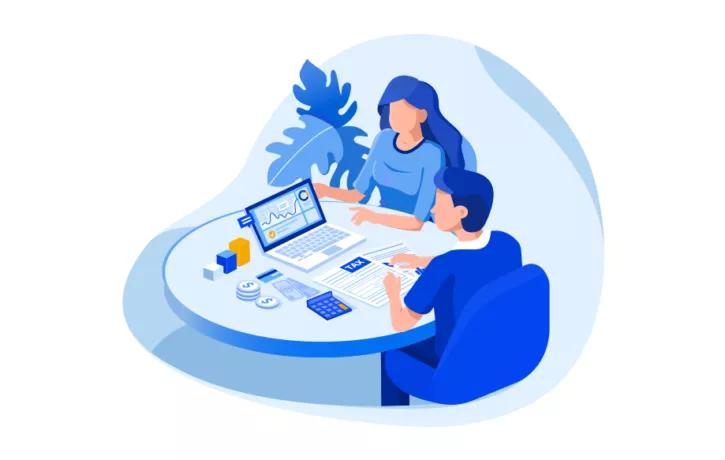“Technology and software companies spend millions acquiring new customers, yet customer retention is what separates top performers from their competitors.” – McKinsey & Company
There’s no doubt that customer acquisition is a vital part of growth for SaaS companies. But acquisition shouldn’t take over all of your marketing and sales efforts: customer retention should be a top priority.
Even with a steady flow of new customers, a high churn rate can easily negate revenue growth due to the cost of acquisition. Instead, by focusing your efforts on customer success, you can increase customer retention and build a loyal customer base that will contribute to faster growth.
According to an infographic by Invespcro, it costs five times more to acquire a new customer than to retain an existing one. Thus, by shifting your focus from acquisition to retention, you can reduce the revenue loss caused by churn. It is also a fact that loyal customers tend to buy more, adding to your bottom-line significantly.
Fortifying your customer retention efforts requires a solid CX strategy.
An excellent CX strategy is integral to SaaS success
By now, we all know how important the customer experience is to customer retention. Gartner even predicted that 81% of companies will compete mostly or entirely based on customer experience or CX in 2019.
You’re already committed to ensuring exceptional experiences for your customers – right?
Well, 80% of companies that participated in a survey conducted by Bain & Company believed their customer experience was great. Unfortunately, only 8% of customers agreed.
But don’t worry. As a subscription-based business, you have enough opportunities to interact with your customers and improve their experience at each level.
Below we’ll share some proven tips to help you design a powerful CX strategy for your SaaS business.
1. Build a user-focused onboarding program
 Have you ever wondered why some customers churn even before completing a month of a subscription? There are two common reasons for that:
Have you ever wondered why some customers churn even before completing a month of a subscription? There are two common reasons for that:
- They don’t understand your product or how to use it
- They don’t think they can benefit from using it
In other words, signing up a new customer is no good unless you can help them understand how to use your product and achieve what you promised.
To do this, your cx strategy must include a user-focused onboarding program that introduces new users to your product and teaches them how to use it properly.
Research indicates that customers with a positive perception of onboarding are much less likely to churn in the first 21 days of using a new product or service. Customers are also willing to pay for an app with a positive onboarding experience.
Here’s how you can build an effective onboarding program:
- Write all your guidelines and manuals in simple, jargon-free language
- Offer self-service support, such as a comprehensive database or FAQs that your users can turn to while setting up your product or using it for the first time
- Use a digital adoption solution that supports user onboarding by guiding customers through different processes and helping them navigate the various features
Like what you’re reading? Subscribe to the blog for fresh insights delivered right to your inbox!
2. Offer quick and effective resolutions with live chat
By investing in sophisticated chat tools, you can enable real-time support and allow instant communications on your website. Quick response time not only improves brand perception but is also linked with higher sales.
According to Forrester Research, “44% of online consumers say that having questions answered by a live person while in the middle of an online purchase is one of the most important features a website can offer.”
Studies also indicate that consumers feel more confident about purchasing from a website that offers live chat support. Over 30% of consumers expect to see a live chat option on every website.
Besides offering speedy resolutions to clients, live chat is also a useful onboarding tool. An advanced live chat tool can be integrated with other services like video-calling and co-browsing that are exceptionally handy in solving complex queries related to SaaS products.
In addition to modern software, trained customer service professionals are vital to the success of any CX strategy. Consequently, it is crucial to conduct training programs for your support agents to make them well-versed with live chat software, as well as practicing empathy, so that they can deliver real-time support with a human touch.
3. Create a fast and user-friendly website to amaze first-time visitors
 A book is often judged by its cover and a brand by its website. Don’t believe us? Consider the following statistics:
A book is often judged by its cover and a brand by its website. Don’t believe us? Consider the following statistics:
- It takes users only 50 milliseconds to form an opinion about your website.
- 88% of online consumers will not return to a site after a bad experience.
- 94% of negative website feedback is design-related.
- 47% of users expect a website to load within two seconds, and 39% will abandon a site if the images take too much time to load.
Give your visitors a reason to stay on your website by creating a lasting impression. Use a modern, responsive, and clean design and follow these tips while designing your site:
- Create adequate contrast between the background color and your text and images to ensure they are visible, as well as readable.
- Write clean and helpful content with adequate white spacing and margins to improve comprehension.
- Use a fixed top banner with a compelling CTA. You can use Hello Bar to set a non-scrolling toolbar at the top of your page that is always visible, however far your visitors may scroll.
- Compress your images to speed up your website so that the browser doesn’t have to resize the pictures each time a user tries to open your site.
- Don’t forget to add your contact details on the website. Customers tend to mistrust companies that do not provide their contact information on websites.
4. Offer user-generated content to acknowledge frequent queries
The marketing landscape is continually changing. Users are increasingly becoming wary of planned marketing campaigns and relying more on the opinions of their peers. It is also a known fact that a majority of users post about products and services online.
But did you know that up to 81% of people read what others have posted about those products? No wonder, user-generated content or UGC marketing is the buzzword for today’s marketers.
Sprout Social explains why UGC marketing is so powerful in simple words:
“Being mentioned or having content shared by a brand is often fun and exciting for consumers. Their shares not only help you to get to their audience, but you also expose your audience as well. It’s a true win-win when done correctly.”
Besides marketing, you can employ user-generated content to build an information database that can be accessed by other users to find solutions to their problems quickly. The top questions can be shared across social media platforms or on a microsite dedicated to displaying user-generated content. It is also possible to create communities around your product or services wherein users can share feedback, queries, and discuss your product or service in general.
4 Tips to Raise Long-Term Customer Engagement
5. Ask for user feedback and integrate it with your new product/marketing plan
 Feedback is a gift that users are willing to share. However, your customers may feel overwhelmed by lengthy questionnaires and feedback forms, leading to survey fatigue that adversely affects your completion rate.
Feedback is a gift that users are willing to share. However, your customers may feel overwhelmed by lengthy questionnaires and feedback forms, leading to survey fatigue that adversely affects your completion rate.
On the contrary, by using a micro survey format, such as Net Promoter Score, it is possible to collect feedback from customers at every stage of the purchase cycle without any fatigue.
NPS technology allows you to monitor your customer journey by asking a single question about user experience at each step of the sales funnel. For more insights, modern NPS surveys often invite customers to explain their scores in their own words. These comments provide an invaluable source of feedback that can be used to improve your offerings and marketing campaigns.
6. Use existing customer insights to identify user behavior
Today, most businesses rely on data to make informed decisions regarding their customer experience and marketing strategies. Services such as Google Analytics enable you to track an enormous amount of customer data that can be used for personalization.
However, it is not possible to understand your customers’ reactions to your existing CX strategies by merely observing numbers. Investing in Hotjar tools in addition to Google Analytics can give you a detailed perspective of user behavior on your site.
Hotjar offers eight powerful tools to understand your customers better. These include heat maps to detect user behavior on a page, anonymized recordings of user sessions, and quick on-page polls to gather feedback at the exact moment your users may experience trouble. Armed with these tools, you can gauge how your visitors react to your existing customer experience strategies and tweak them accordingly for maximum impact.
With a stellar CX strategy, you’ll see your retention rate soar
Today, as most businesses compete on innovative customer experiences as opposed to price or quality, it becomes inevitable for subscription-based companies to invest in their CX program or face an increasing amount of customer churn.
By integrating some of the tips we outlined in this article, you can boost your customer retention while providing a much more satisfactory experience.
WalkMe’s Digital Adoption Platform (DAP) transforms the user experience in today’s overwhelming digital world. Using artificial intelligence, engagement, guidance, and automation, WalkMe’s transparent overlay assists users to complete tasks easily within any enterprise software, mobile application or website. Discover how a DAP can revolutionize your business.

